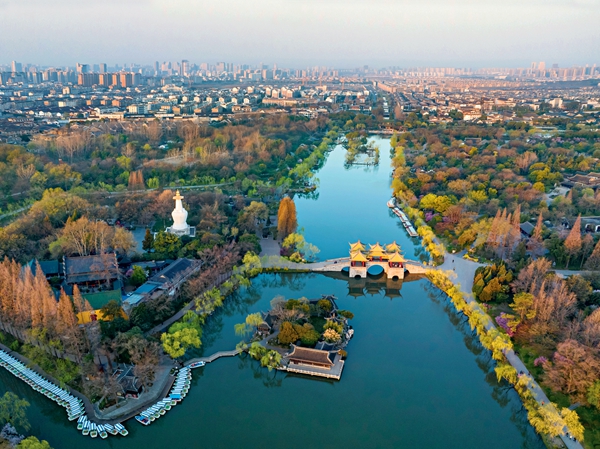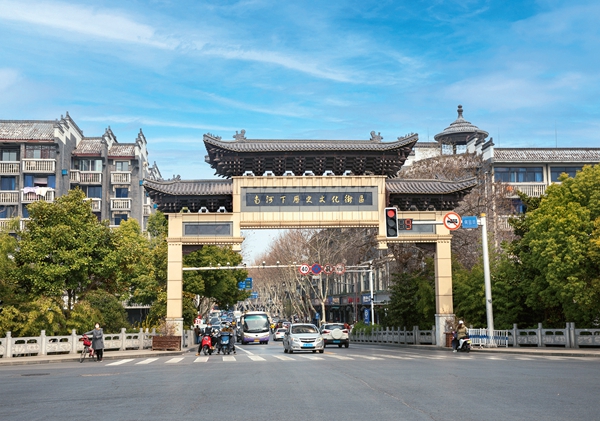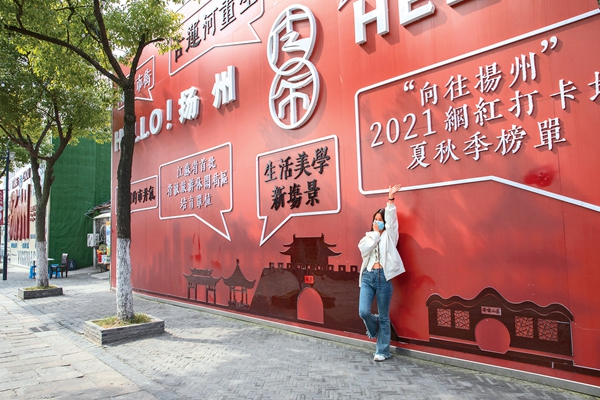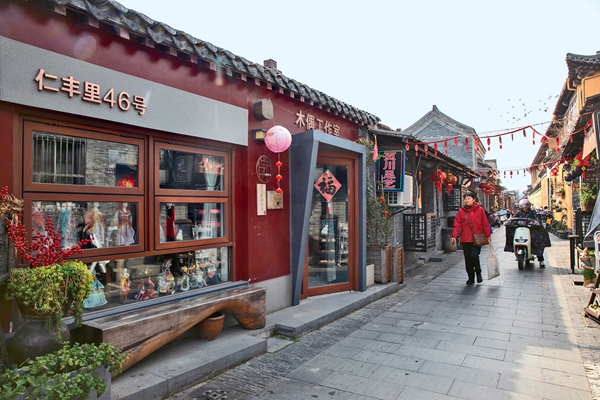
Yangzhou is located in the central region of East China's Jiangsu Province, where the Yangtze River meets the Grand Canal. It is known as "the first canal city in China." Yangzhou, with a history of more than 2,500 years, was one of the first cities to be designated a national historical and cultural city by the State Council.
Built by Water
Yangzhou's development has remained inextricably intertwined with the Grand Canal since the canal was built more than 2,500 years ago. Yangzhou has shared provenance with the canal, which stretches from Beijing to Hangzhou, capital of East China's Zhejiang Province.
The Grand Canal was listed as a UNESCO World Heritage site in 2014. The office for the canal's World Heritage site application was established in Yangzhou in 2006. Gu Feng, then-head of Yangzhou's cultural heritage bureau, and the office's director, says one of the greatest values of Yangzhou's section of the canal is that it has an accurate historical record.
According to China's first detailed historical compendium, Zuo Zhuan, King Fuchai of the Wu Kingdom constructed a city, known as Hancheng, and a canal, called Han Gou, which connected the Yangtze and Huaihe rivers in 486 BC. Hancheng eventually became Yangzhou, and the construction of canals in other eras, including the Sui (581-618) and Yuan (1206-1368) dynasties, eventually completed the Grand Canal.

The Yangzhou section of the Grand Canal hosts rich cultural heritage. Since the Grand Canal was added to UNESCO's World Heritage list in 2014, six channels and 10 heritage sites from Yangzhou have received UNESCO world-heritage status.
Slender West Lake, one of Yangzhou's most-renowned scenic spots, is linked with the Grand Canal, and the lake is one of UNESCO's World Heritage sites along the canal.
The canal brought economic prosperity and cultural progress to Yangzhou. Historical records from the Tang (618-907) and Song (960-1279) dynasties describe Yangzhou as one of the country's most affluent cities.
Although the canal was constructed for military purposes, it later facilitated the national food supply, including grain and salt. Yangzhou was, therefore, home to many salt merchants, who built elaborate Chinese gardens, which remain to this day.
Yangzhou China Grand Canal Museum, which opened in 2021, is designed to be an "encyclopedia" of the canal, showcasing relevant culture, economics and ecology by using immersive technology and an interactive design.
Yangzhou has hosted various canal-related events, including the World Canal Cities Forum and the World Canals Conference, both of which focus on international exchanges related to the preservation of canals, and the Grand Canal Culture and Tourism Expo, which features parades on the waterway.
Historical, Cultural Blocks
Yangzhou was called Guangling during ancient times. Guangling District, in the central area of Yangzhou, is known for ancient blocks built during the Ming (1368-1644) and Qing (1616-1911) dynasties.
There are four well-preserved historical and cultural blocks — Dongguan Street, Renfengli, Wanzi Street and Nanhexia — in Guangling, and combined they are home to more than 500 historical buildings, and 148 cultural-relic-protection units.
Dongguan Street, which is 1,122 meters long, has been a historical witness to the development and evolution of Yangzhou, and it has been a window that has displayed the city's canal and salt-merchant cultures. It used to be a gateway of water transportation, and a center of business, religion and culture. It boasted a bustling market and various stores.
Dongguan Street has a fish-bone-styled street layout, which maintains the traditional style and features of the Ming and Qing dynasties. Scattered throughout the block are former residences of historic figures, mansions of former salt merchants, and temples and gardens. With rich historical relics and cultural remains, Dongguan Street is among the best-preserved ancient commercial streets of the cities along the Grand Canal.
Dongguan Street, home to catering and entertainment venues, gardens, museums, time-honored stores, and ancient residential buildings, is one of the best places for Chinese and foreigners to appreciate the history, culture and lifestyle of Yangzhou.
The Ministry of Culture and Tourism of China on March 1 issued an announcement that Dongguan Street was officially approved as one of the second group of national tourism and leisure blocks.

New Vitality
The authorities in Yangzhou have renovated historical and cultural communities while at the same time they have maintained traditions and the city's cultural charm. Nowadays, the ancient streets and alleys glow with new vitality, as they have become great options for locals and tourists alike to enjoy their leisure time.
Many domestic and international brands have established their first stores or flagship stores in Yangzhou's historic and cultural communities, and those businesses have injected new impetus into retail sales within the city. The thriving, first-store economy and nighttime economy have become new drivers of local consumption and cultural-tourism development.
Various cultural and tourism festivals have been held, and such events have enriched people's experiences on the city's ancient streets. Such events have included the coffee culture festival, on Pishi Street, and the folk culture festival, in Renfengli community (to mark Dragon Boat Festival).

Renfengli is the only well-preserved ancient community in Yangzhou that retains the pattern of streets and alleys of the Tang Dynasty. While wandering in Renfengli, tourists will experience the charm of Yangzhou's rich intangible cultural heritage, including Yangzhou paper-cuts, woodblock printing, Yangzhou pinghua (a kind of storytelling in the Yangzhou dialect), and Yangzhou puppet show.
Joseph Simlinck, a Brazilian in his 60s, has a passion for the ancient city of Yangzhou. He and one of his Chinese friends, Gao Hailin, run a Western-style restaurant in Renfengli. Yuan Li, a neighbor of Simlinck, shares that passion for Renfengli. "I am a native of Yangzhou, and I used to work in Shanghai. I moved back to the alley, where I used to live, after I retired. I am impressed by the new look of Renfengli, with both cultural heritage and modern vitality," Yuan says.
Photos by Yuan Yuhua
(Source: Women of China English Monthly April 2023 issue)